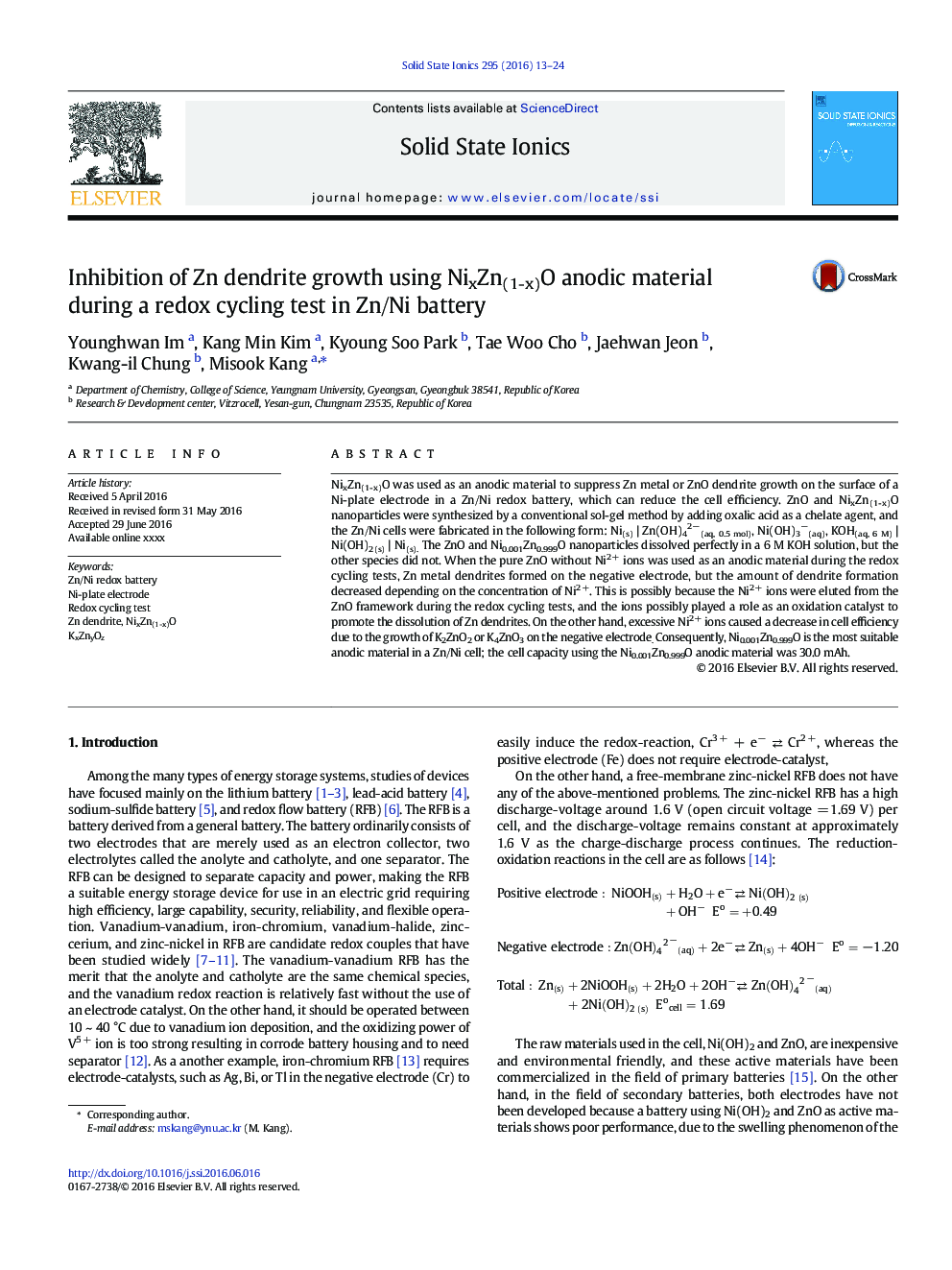| کد مقاله | کد نشریه | سال انتشار | مقاله انگلیسی | نسخه تمام متن |
|---|---|---|---|---|
| 1296002 | 1498248 | 2016 | 12 صفحه PDF | دانلود رایگان |

• NixZn(1-x)O was used as an anodic material by a conventional sol-gel method.
• The amount of dendrite formation decreased depending on the concentration of Ni2 +.
• The Ni2 + ions possibly played a role as an oxidation catalyst to promote the dissolution of Zn dendrites.
• Excessive Ni2 + ions caused a decrease in cell efficiency due to the growth of K2ZnO2 or K4ZnO3.
• Ni0.001Zn0.999O is the most suitable anodic material in a Zn/Ni cell.
NixZn(1-x)O was used as an anodic material to suppress Zn metal or ZnO dendrite growth on the surface of a Ni-plate electrode in a Zn/Ni redox battery, which can reduce the cell efficiency. ZnO and NixZn(1-x)O nanoparticles were synthesized by a conventional sol-gel method by adding oxalic acid as a chelate agent, and the Zn/Ni cells were fabricated in the following form: Ni(s) | Zn(OH)42 −(aq, 0.5 mol), Ni(OH)3−(aq), KOH(aq, 6 M) | Ni(OH)2(s) | Ni(s). The ZnO and Ni0.001Zn0.999O nanoparticles dissolved perfectly in a 6 M KOH solution, but the other species did not. When the pure ZnO without Ni2 + ions was used as an anodic material during the redox cycling tests, Zn metal dendrites formed on the negative electrode, but the amount of dendrite formation decreased depending on the concentration of Ni2 +. This is possibly because the Ni2 + ions were eluted from the ZnO framework during the redox cycling tests, and the ions possibly played a role as an oxidation catalyst to promote the dissolution of Zn dendrites. On the other hand, excessive Ni2 + ions caused a decrease in cell efficiency due to the growth of K2ZnO2 or K4ZnO3 on the negative electrode. Consequently, Ni0.001Zn0.999O is the most suitable anodic material in a Zn/Ni cell; the cell capacity using the Ni0.001Zn0.999O anodic material was 30.0 mAh.
Figure optionsDownload as PowerPoint slide
Journal: Solid State Ionics - Volume 295, 1 November 2016, Pages 13–24